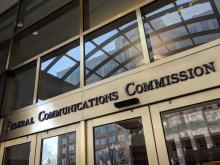LTD and Starlink Booted from Rural Digital Opportunity Fund by FCC
In a release today, the Federal Communications Commission (FCC) announced it was voiding applications by two of the biggest Rural Digital Opportunity Fund (RDOF) bidders from December 2020. This includes more than $885 million for Low-Earth Orbit (LEO) provider Starlink and more than $1.3 billion for LTD Broadband, Inc.
LTD’s original winning bids are spread across 15 states, but there has been speculation brewing since late last year from industry experts as to if funds would be released at all. We’ve seen 12 releases from the FCC since late winter authorizing funds for most of the winning bidders (from the monopoly providers to consortia of rural electric cooperatives), which we’ve collected in our Rural Digital Opportunity Fund Dashboard here. Conversely, there has been relatively little conversation about why Starlink had not yet received any of its winning bids.
Skepticism about Speed, Deployment and Cost



